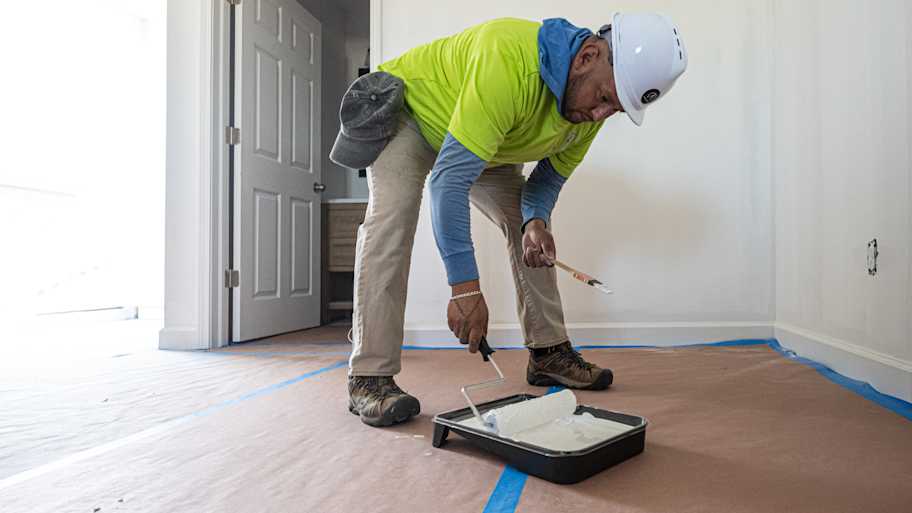Ceiling Paint vs. Wall Paint: What’s the Difference?
Things are looking up for your next paint project


Ceiling paint resists dripping during application.
Wall paint comes in a variety of colors and finishes.
Wall paint holds up better to frequent cleaning.
A fresh coat of paint can do wonders for a space. However, it’s important to choose the right type of paint for the best results. In addition to buying wall paint, you’ll also want to consider purchasing ceiling paint. Let’s compare ceiling paint vs. wall paint to explore the differences, and learn when to use each kind for the perfect paint job.
Ceiling Paint vs. Wall Paint: Key Differences
While you could technically use wall paint for both your walls and ceiling, it’s not recommended for the best results. That’s because standard wall paint is low in viscosity. Simply put, wall paint is thinner and is likely to drip while you’re painting. This is perfectly fine when painting walls, but painting a ceiling with wall paint can make for a huge mess.
Ceiling paint, on the other hand, is thicker, which significantly reduces the amount of drippage. Due to its high viscosity, it can better cover any blemishes on your ceiling with fewer coats of paint.
It’s ideal, then, to use both kinds of paint—wall paint for walls, and ceiling paint on the ceiling. If you need help finding the right brand and color, hire a local interior painter to benefit from their expertise. They’ll work with you during every step of the painting process to create a finished look you’ll absolutely love.
What Is Ceiling Paint?
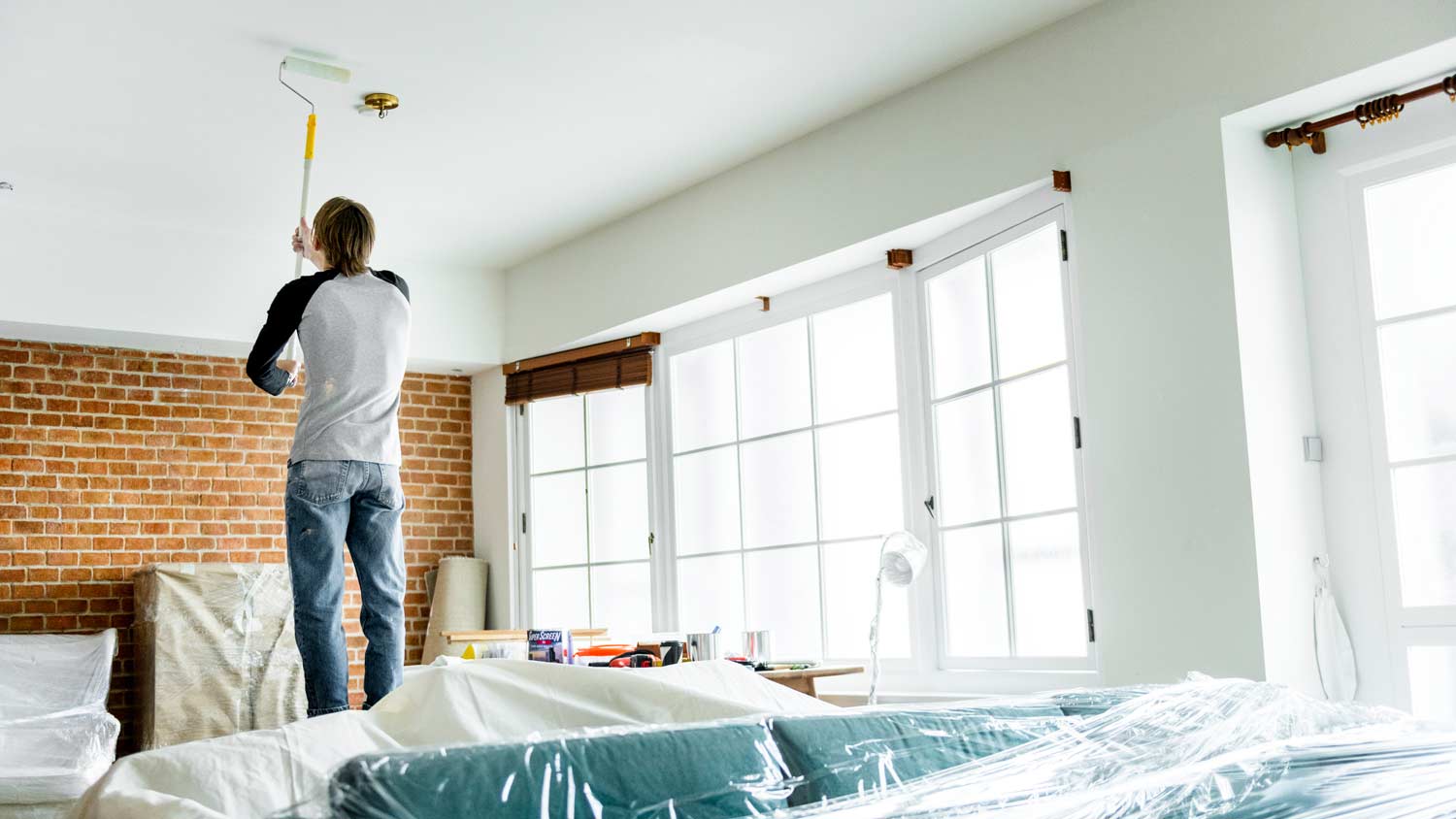
Ceiling paint is a type of paint specially formulated for use on ceilings. Its thicker consistency promotes quality adhesion and minimal drip, while also being able to cover blemishes and stains. A high-quality ceiling paint is also durable and requires little to no maintenance. There are various types of ceiling paint to choose from, such as flat acrylic, satin sheen, and semi-gloss. The best type of ceiling paint for your project will depend on several factors, including the type and texture of your ceiling and the room’s function.
| Pros | Cons |
|---|---|
| Thicker and less likely to drip | Slightly higher in cost |
| Requires fewer coats | Fewer color options |
| Hides small blemishes and stains | Not ideal for heavy cleaning |
Best for:
Use on ceilings
Preventing drips, making for an easier cleanup
Adhering to ceilings with few coats
Hiding minor stains and defects on ceilings
Pros of Ceiling Paint
Less paint drip: Due to its high viscosity, ceiling paint is thicker in consistency and drips less when applied to the ceiling. This makes for a smoother and quicker painting and cleanup process.
Requires fewer coats: A quality ceiling paint typically requires fewer coats of paint than wall paint, resulting in shorter painting and drying times.
Covers stains and imperfections: Since ceiling paint is thicker, it does a better job of hiding stains and blemishes on ceilings which creates a more polished look. Ceiling paint is also more resistant to mold, smoke, dust, and moisture.
Cons of Ceiling Paint
More costly: You’ll likely end up paying a bit more for a quality ceiling paint. However, the cost to paint a ceiling is a worthy investment. Purchasing high-quality materials creates a durable and long-lasting finish.
Fewer color options: While there are a variety of colors and types of ceiling paint to choose from, the color options will be less plentiful compared to wall paint. For this reason, it might be difficult to find an exact color match for your walls and ceiling.
Can’t withstand heavy cleaning: Unlike wall paints, most ceiling paints aren’t designed to withstand frequent and heavy cleaning. This usually isn’t a huge problem since ceilings aren’t high-contact areas.
What Is Wall Paint?
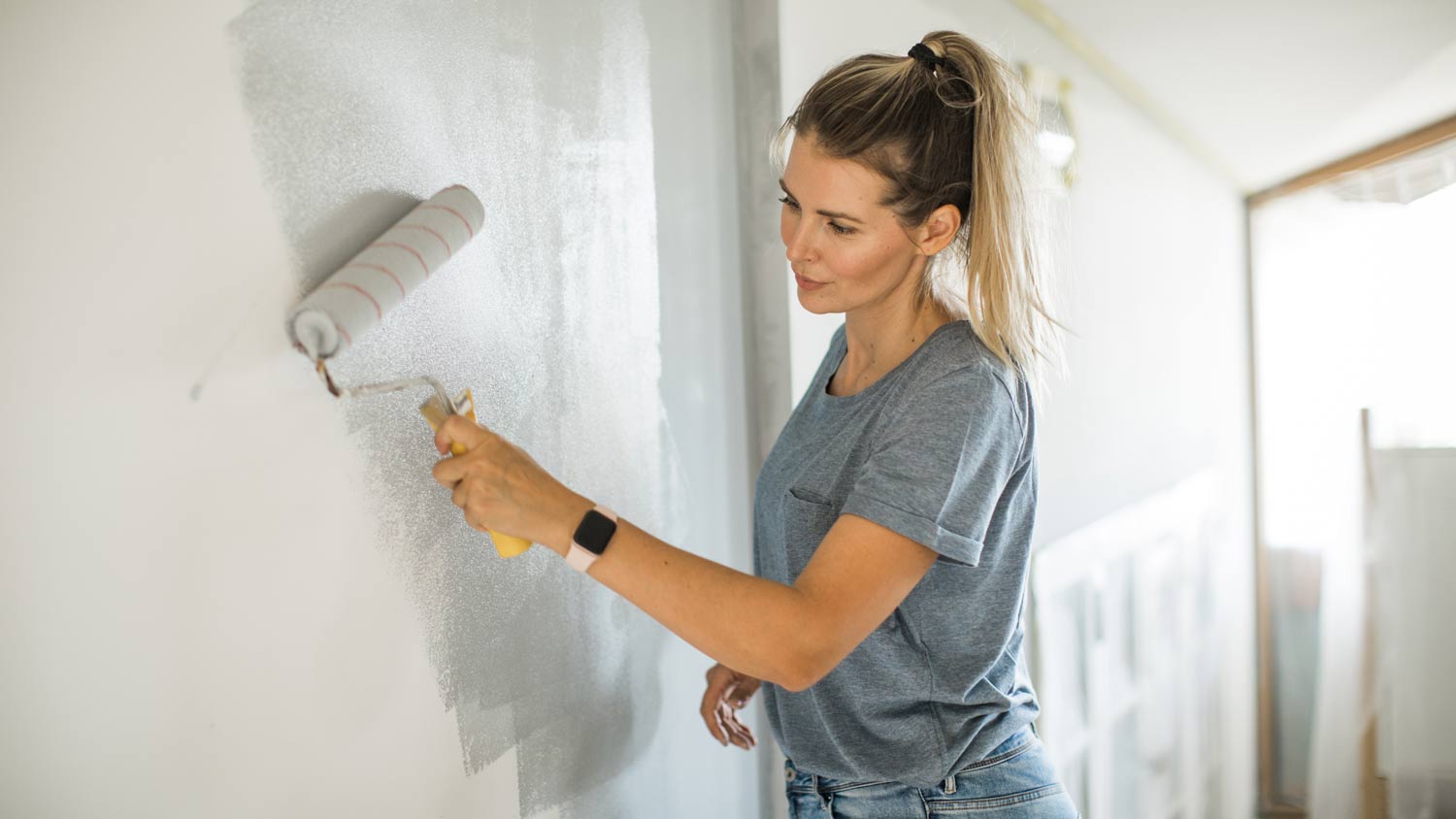
Wall paint is designed for use on walls. It is meant to protect walls while also boosting the aesthetic appeal of a room with unique colors and textures. There are endless types, brands, colors, and finishes of wall paint to choose from. Unlike ceiling paint, wall paint is thin in texture. It often requires multiple coats for the best finished look, and you’re more likely to have to clean up drips once you’re done painting.
| Pros | Cons |
|---|---|
| Plentiful color options | Not ideal for hiding stains |
| More affordable | Requires multiple coats |
| Holds up to regular cleaning | Thinner and produces more paint drip |
Best for:
Use on walls
Enhancing walls with a variety of colors and finishes
Frequent cleaning and contact
Pros of Wall Paint
Many style options: Wall paint comes in many types and finishes and an endless array of stunning colors.
More affordable: While you may need to use larger amounts of wall paint, the good news is that it’s slightly lower in cost than ceiling paint.
Ideal for cleaning: Wall paints are typically designed to withstand frequent cleaning. Just be sure to avoid using harsh chemicals and scrubbing too hard.
Cons of Wall Paint
Limited ability to hide stains: Being low in viscosity, wall paint isn’t as effective at hiding stains and blemishes that may be on the wall before painting.
Requires multiple coats: Since wall paint is thinner, you’ll have to use multiple coats to achieve your desired look.
More drip: Wall paint produces more paint drip than ceiling paint. This can make for a messier painting process and leave more to clean up once you’re done.
Ceiling Paint vs. Wall Paint
| Ceiling Paint | Wall Paint |
|---|---|
| Thicker and high in viscosity | Thinner and low in viscosity |
| Requires fewer coats and drips less | Requires multiple coats and drips more |
| Hides small stains and blemishes | More affordable and more style options |
Design Options: Wall Paint
While you can find ceiling paint in a range of colors and finishes, you have far more options when it comes to wall paint. Homeowners looking to flex their creative muscles and transform the look of a room can choose from a seemingly endless variety of colors and finishes. There’s so much to pick from that even deciding on a shade of white wall paint can be a challenge!
Price: Wall Paint
On average, paint costs between $20 and $60 per gallon. While there’s not a huge difference in price, wall paint is generally less expensive (which is helpful, given you’ll need more of it). There are several other factors that influence the cost of paint, including brand, color, and type. So, it’s possible to make wallet-friendly choices whether you’re buying wall paint or ceiling paint.
ROI and Resale Value: Tie
In this category, ceiling and wall paint both take the win. A quality paint job is a relatively inexpensive and easy way to boost your home’s property value. While the cost to paint the interior of a house ranges from $960 to $3,050, interior painting is said to offer a return on investment (ROI) of over 100%. You may be able to increase that figure even more by choosing popular paint colors and high-quality paint brands.
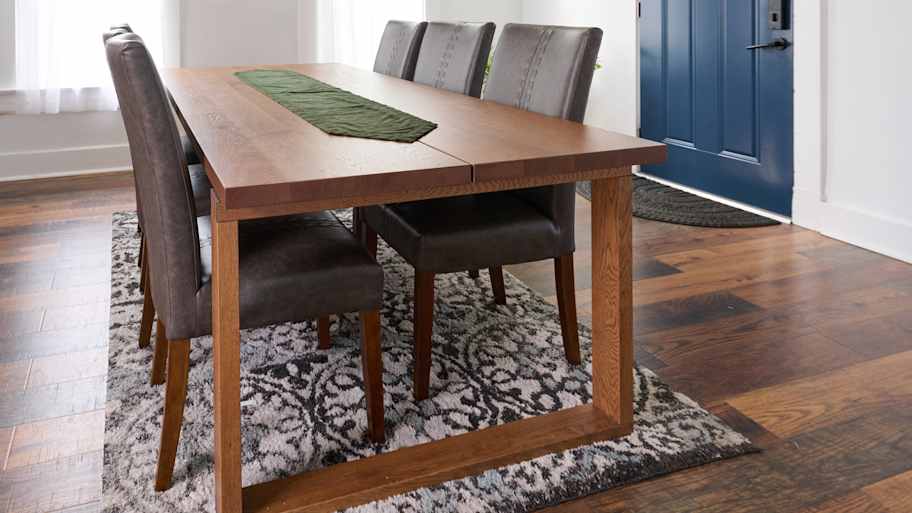
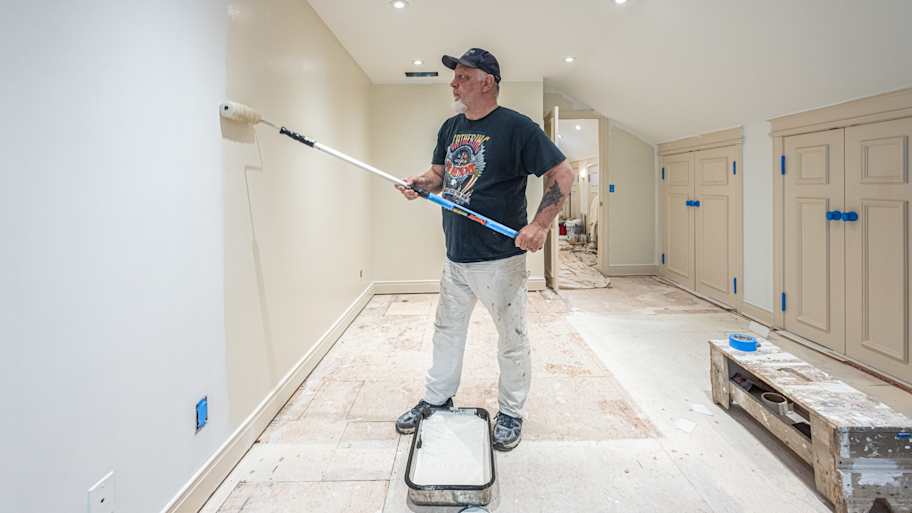
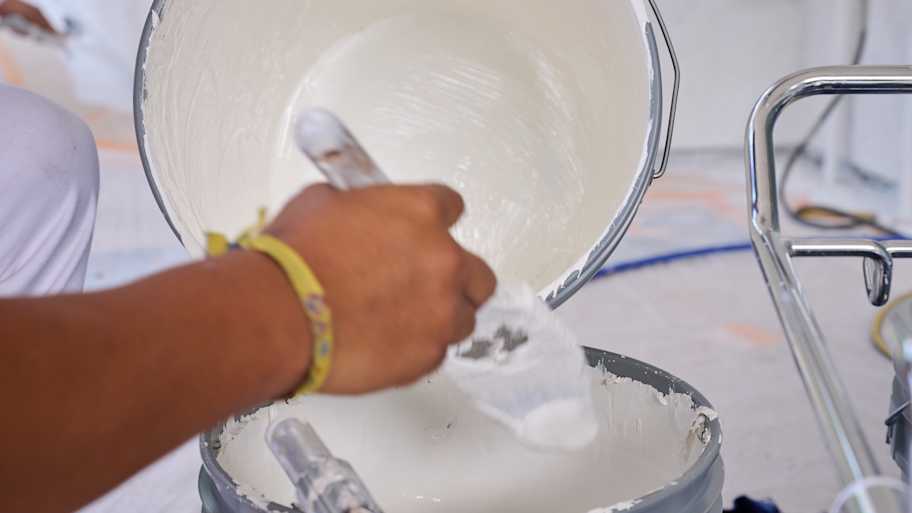
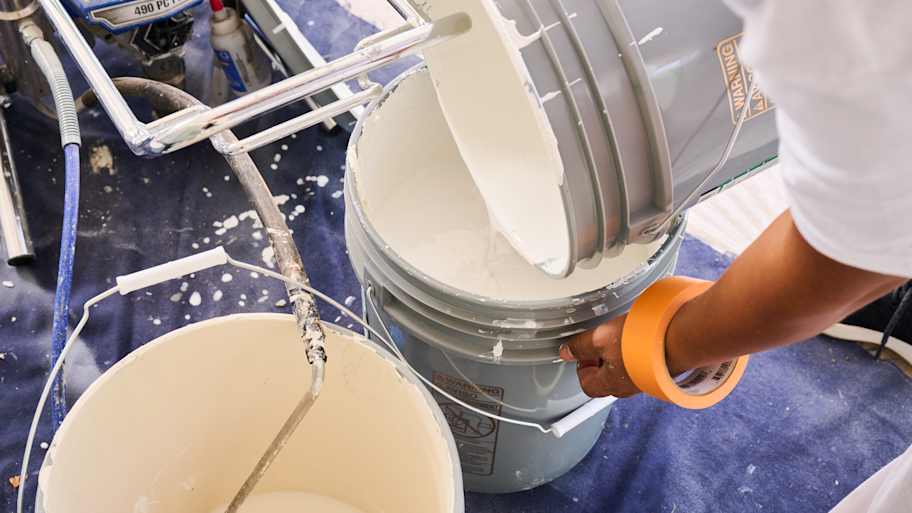
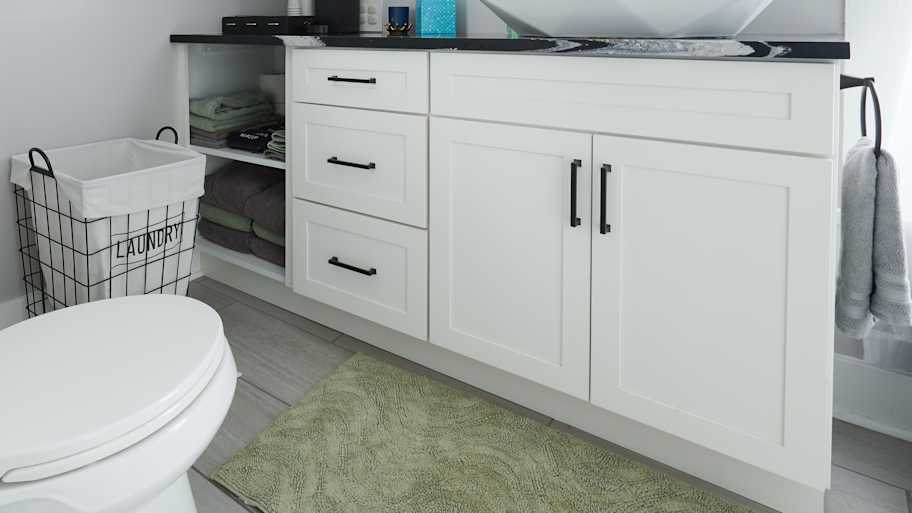
- The Best Bathroom Ceiling Paint
- How Long Does Paint Last, and How Can You Tell If It’s Expired?
- Types of Paint: Which Is Best for Your Project?
- Can You Paint Over Lead Paint Safely?
- 6 Reasons Your Paint Is Peeling off the Wall
- What Is Flat Paint? Everything You Need to Know
- 6 Common Paint Problems and How to Fix Them
- What to Do if You Have Lead Paint in Your Home
- How to Remove Paint From Concrete With 5 Super Efficient Methods
- Who Do You Call to Remove Lead Paint



